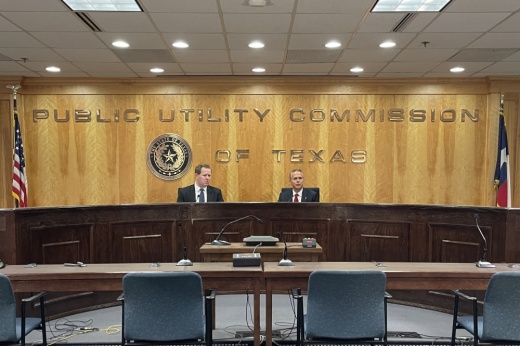Less than two weeks after stepping into his new role, Pablo Vegas, CEO of the Electric Reliability Council of Texas, provided updates on the grid conditions and his priorities as head of the agency at an Oct. 13 news conference. Vegas was joined by Peter Lake, chair of the Public Utility Commission of Texas.
Lake touted the power grid’s ability to withstand severe weather conditions, including unusually high temperatures over the summer. The power demand reached record levels 11 times this summer, Lake said, but the grid did not enter emergency conditions.
ERCOT issued two voluntary conservation appeals in July. Texans were encouraged to limit their energy consumption for set time periods by turning up the temperature in their homes, turning off lights and not using large appliances.
The grid also survived an “unusually cold winter [with] lots of snow and ice” without any emergency alerts, Lake said.
Rebuilding public trust
Despite recent successes, energy regulators have faced heavy criticism and distrust from customers following Winter Storm Uri, which hit the state in February 2021. Over two-thirds of Texans lost power during the storm, and nearly half lost access to running water, according to previous reporting by Community Impact.
“The key to rebuilding confidence in the electric grid is going to be continued reliable execution and operations—that's our collective focus at ERCOT,” Vegas said.
Vegas emphasized Texans can expect consistency and stability from ERCOT. Power plants and generators across the state have been weatherized for all seasons of the year, including with insulation, coverings and heat tracing for pipes.
Statewide weatherization requirements were created by Senate Bill 3, which Gov. Greg Abbott signed in June 2021.
“[The] failure to weatherize can result in penalties of up to $1 million [per day of noncompliance],” Abbott said at a June 2021 news conference.
Under the bill, a power outage alert system will notify Texans if the power supply becomes too low to meet state or regional demand.
Other recent reforms, Lake said, include creating a maintenance schedule for generators across the state. This will ensure facilities are up to date on maintenance and prevent unnecessary outages, he explained.
“We are moving away from the old crisis-based business model to a reliability-based business model,” Lake said. “We're turning on generators sooner rather than later, [and] we're not going to let the [energy] reserves get too low.”
Lake said he was confident the grid “is ready for whatever Mother Nature throws at us,” including weather similar to Winter Storm Uri.
The cost of reforms
Lake said ERCOT’s operational changes cost each household an additional $1.25 per month on average. Data was not readily available to support this statement, but Lake said it will be released publicly.
Energy regulators are in the first phase of a massive system overhaul. The first phase includes taking action earlier to prevent blackouts, increased efficiency standards and changes to the use of ancillary services.
The PUCT aims to release the plans for phase two by mid-November, Lake said. Information about the grid redesign will also be presented to state lawmakers in January during the 88th Texas legislative session.





